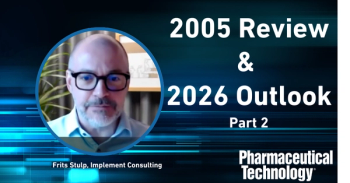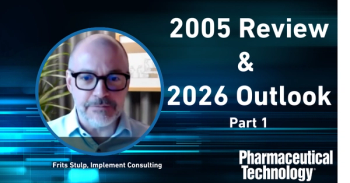
Pfizer Offers Example of Lean Design Application for Clinical Supply Manufacturing
Gerry Boushelle, associate director of global supply chain clinical-supply manufacturing in Pfizer’s (New York) global research and development division, presented a case study of the company’s implementation plan, conducted during 2006, at the 2007 Pharamaceutical Technology annual conference.
Philadelphia, PA (July 26)-Between 2003 and 2006, production growth and staff at
Boushelle’s team started out by getting senior management involved, defining core business deliverables and forming a cross-functional team to carry out the initiative. The team included graduate student interns from the University of Michigan’s Tauber Institute for Global Operations. “Collaborating with the University of Michigan provided a powerful way to jumpstart lean manufacturing sites,” explained Boushelle. (The university is starting to work with a number of other pharmaceutical companies;
By mapping out a “current state” business model around the company’s solid dosage manufacturing capacity as well as a “future state” or ideal business model, the team realized that there was a significant variability in its procedures and outcomes (such as missed product delivery dates), and wanted to simplify activities. For example, the team wanted to reduce lead times by up to 20 days. “We had a lot to gain,” said Boushelle, including changing the culture on the plant floor. To explain, the company used to focus on the number of batches it produced, the number of quality deviations it had, and the due date of the product. “Everything was end-driven. We didn’t operate in the cycle times we had (approximately two to three months). We needed lean methodology to help us become more efficient,” said Boushelle.
Completing the business capacity models and goals for change took just over three months and included face-to-face interviews with stakeholders, a collection of retrospective data, the drafting of timelines, and a consensus meeting that involved all those in the preliminary initiative meetings. “We learned that not a lot of people were on the same page,” said Boushelle. But by the end of the process, “people could see their piece of the puzzle, who did which activity before them, after them, and what everyone’s timeframe was for getting the job done.”
The retrospective review found that the majority of time-taking steps were tied to precursor activities-equipment and material readiness. To improve production time, the lean design team decided to start a product cycle after precursor activities were already completed, and to place more emphasis-and enforcement-on start cycle times to avoid an end-date focus. The team’s goal going forward is to reduce lead time from the current state by 50%. “This won’t happen overnight, it’s a long-term goal, but we now know how we want to operate,” said Boushelle.
To achieve its future state goals, a major component of Pfizer’s lean design initiative is production leveling. “Some weeks, we have less than five projects, the next week, we have more than 10,” explained Boushelle. As a result, staff are taking it easy one week, and working overtime the next. The best productivity-and bang for the company’s buck, as Boushelle put it-is somewhere in the middle when staff has a manageable number of projects on a consistent basis. In this particular case study example, the lean design initiative has set a course for managing six to eight projects a week. “With this target, we can get 70–80% capacity out of our production teams,” said Boushelle.
Another major piece of the initiative is getting project managers on the same track. “We had a pioneering group, meaning people liked doing things their own way. And while they did a good job, we couldn’t measure trends across the board,” explained Boushelle. So the lean design team has established clear project manager roles, including increased accountability, identifiable lines of communication, and standardized tools. Instead of providing management with excuses, such as “the raw materials are not available yet,” all project managers now have a timeline-based checklist to follow and they are working in a more similar manner. As a result, processes are becoming simpler, more streamlined and more consistent, said Boushelle.
The team has also posted milestones and goals around the office-not just in the management workspaces but also on the plant floors so that everyone can see where they are in the process, where they have to get to, and feel a sense of pride when they reach their goals. “They have really started to latch onto that and change their behavior,” said Boushelle.
While Boushelle admits that his group has not mastered lean design yet, everyone is enthusiastic about working toward their “future state.” So far, lead time has been reduced overall by more than 10% and the company has significantly improved the timely delivery of products to the warehouse. “Lean design is not a quick flavor-of-the-month initiative,” he said, “it’s a continual improvement process that you have to apply a patient approach to.”
*The 2007 Pharmaceutical Technology Annual Conference was held in Philadelphia, Pennsylvania July 24–26.
Newsletter
Get the essential updates shaping the future of pharma manufacturing and compliance—subscribe today to Pharmaceutical Technology and never miss a breakthrough.




